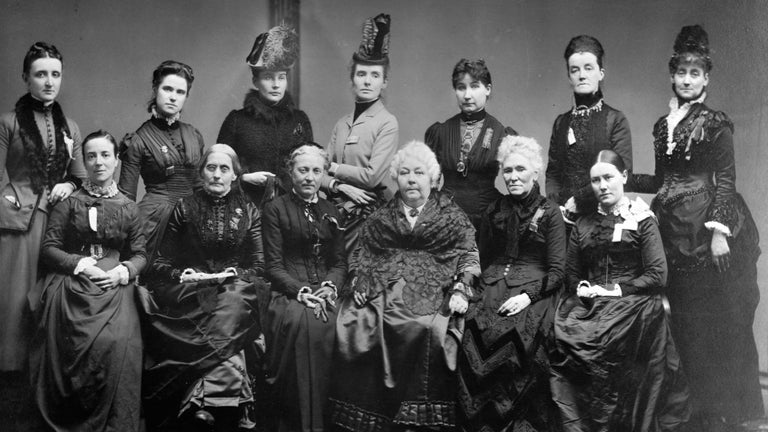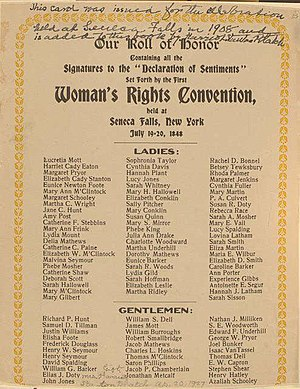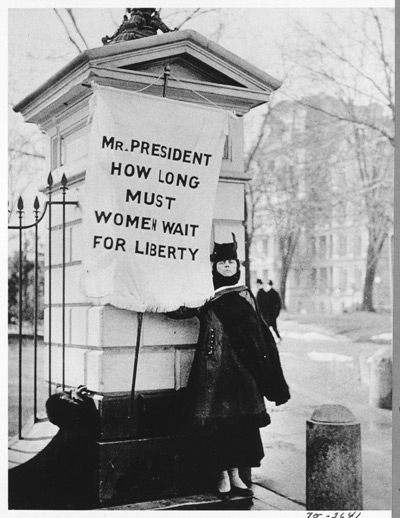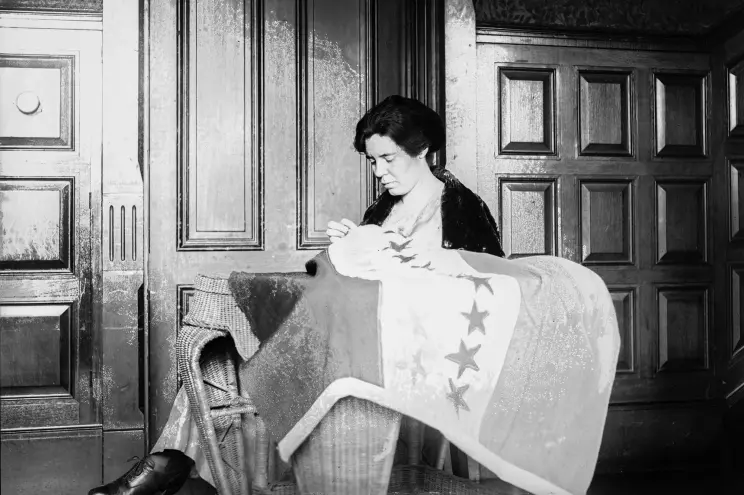The Fight for Equality: The Story of Women's Suffrage in America
- Debbie Brown

- Feb 17
- 7 min read
The struggle for women’s right to vote in the United States is a defining chapter in American history. The movement spanned nearly a century, involving immense sacrifice, determination, and unwavering commitment by women and men who believed in the principles of equality and democracy. The success of the women's suffrage movement changed the course of the nation forever, culminating in the passage of the 19th Amendment.

The Early Days of the Movement
The roots of the women’s suffrage movement can be traced back to the mid-19th century, emerging alongside other reform movements such as the abolition of slavery. Women began to challenge their second-class citizenship and demand political representation.
The Seneca Falls Convention of 1848 marked the formal beginning of the organized women's rights movement in America. Spearheaded by Elizabeth Cady Stanton and Lucretia Mott, the convention produced the Declaration of Sentiments, a powerful document modeled after the Declaration of Independence. Stanton boldly declared that "all men and women are created equal" and called for women's suffrage among other rights.

The Declaration of Sentiments
We hold these truths to be self-evident: that all men and women are created equal; that they are endowed by their Creator with certain inalienable rights; that among these are life, liberty, and the pursuit of happiness; that to secure these rights governments are instituted, deriving their just powers from the consent of the governed.
Whenever any form of Government becomes destructive of these ends, it is the right of those who suffer from it to refuse allegiance to it, and to insist upon the institution of a new government, laying its foundation on such principles, and organizing its powers in such form, as to them shall seem most likely to effect their safety and happiness.
Prudence, indeed, will dictate that governments long established should not be changed for light and transient causes; and accordingly all experience hath shown that mankind are more disposed to suffer, while evils are sufferable, than to right themselves by abolishing the forms to which they are accustomed. But when a long train of abuses and usurpations, pursuing invariably the same object, evinces a design to reduce them under absolute despotism, it is their duty to throw off such government, and to provide new guards for their future security.
Such has been the patient sufferance of the women under this government, and such is now the necessity which constrains them to demand the equal station to which they are entitled. The history of mankind is a history of repeated injuries and usurpations on the part of man toward woman, having in direct object the establishment of an absolute tyranny over her. To prove this, let facts be submitted to a candid world.
[The Declaration of Sentiments continues with a detailed list of grievances against the systemic oppression of women, paralleling the style and content of the Declaration of Independence.]
Over the following decades, women’s rights activists tirelessly campaigned for the right to vote. Leaders such as Susan B. Anthony and Stanton worked together to build national momentum. Anthony famously stated, *"There will never be complete equality until women themselves help to make laws and elect lawmakers."

The Long Road to Victory
Progress was slow and often met with fierce opposition. The suffragists faced ridicule, violence, and arrest as they pushed for change. However, their perseverance began to yield results as individual states granted women the right to vote, starting with Wyoming in 1869.
The fight took a significant turn during the early 20th century. World War I proved to be a pivotal moment. As women took on critical roles in the workforce while men fought overseas, their contributions underscored the hypocrisy of denying them political representation.
Alice Paul and the National Woman’s Party employed radical tactics to keep pressure on the federal government. Women picketed outside the White House, carrying banners with pointed messages such as, "Mr. President, how long must women wait for liberty?" The harsh treatment of jailed protesters further galvanized public support for the cause.

The Final Push: The 19th Amendment
After decades of relentless activism, the U.S. Congress finally began to act. On June 4, 1919, the Senate voted in favor of the 19th Amendment after years of heated debates and prior failures. The amendment simply stated:
*"The right of citizens of the United States to vote shall not be denied or abridged by the United States or by any State on account of sex."
The Senate vote was hard-fought, passing by only two votes. Senator James R. Mann introduced the amendment, and support grew as suffragists continued to rally nationwide. The amendment was then sent to the states for ratification.
The decisive moment came on August 18, 1920, when Tennessee became the 36th state to ratify the 19th Amendment. The final vote in the Tennessee legislature was famously decided by 24-year-old Harry T. Burn, who changed his vote to “yes” at the urging of a letter from his mother.
On August 26, 1920, the 19th Amendment was officially certified, granting women the constitutional right to vote.

Legacy of the Women’s Suffrage Movement
The ratification of the 19th Amendment was a monumental victory, but it was not the end of the fight for equality. Many women of color, particularly African American, Native American, Asian, and Latina women, continued to face barriers to voting for decades. The suffrage movement planted the seeds for ongoing battles for civil rights and gender equality that continue to this day.
The courage and determination of women like Susan B. Anthony, Elizabeth Cady Stanton, Sojourner Truth, and Alice Paul inspire us to keep working toward a more inclusive and just society. Their legacy reminds us that progress requires persistence, unity, and an unwavering belief in the power of equality.

Key Women in the Suffrage Movement
Susan B. Anthony: A lifelong advocate for women’s rights, Anthony co-founded the National Woman Suffrage Association (NWSA) with Elizabeth Cady Stanton. Though she did not live to see women gain the right to vote, her tireless work laid the foundation for future success. Anthony traveled tirelessly, delivering speeches, organizing petitions, and publishing articles to garner support for the cause. Her arrest in 1872 for illegally voting became a rallying cry for suffragists.

Susan B. Anthony Elizabeth Cady Stanton: A visionary and powerful writer, Stanton was instrumental in drafting arguments for suffrage and organizing the movement’s early conventions. As one of the authors of the Declaration of Sentiments, Stanton’s ability to articulate the demands of women set the intellectual and moral foundation for the suffrage movement. Her partnership with Anthony was critical; Stanton focused on strategy and writing, while Anthony focused on outreach and activism.

Elizabeth Cady Stanton Sojourner Truth: An African American abolitionist and suffragist, Truth delivered her famous speech “Ain’t I a Woman?” in 1851 at the Women’s Rights Convention in Akron, Ohio. Her speech underscored the intersectionality of race and gender inequality, reminding audiences that women of color faced dual layers of discrimination. Truth’s advocacy gave voice to African American women, who were often excluded from broader suffrage efforts.

Sojourner Truth Ida B. Wells: A fearless journalist, educator, and civil rights advocate, Wells fought for women’s suffrage while confronting racial discrimination within the movement. She co-founded the Alpha Suffrage Club in Chicago, one of the first organizations to promote the political power of African American women. Wells famously defied segregation at a 1913 suffrage parade in Washington, D.C., refusing to march in the segregated section designated for Black women.

Ida B. Wells Alice Paul and Lucy Burns: In the early 20th century, these younger activists brought new energy to the movement. Both women studied in England, where they learned militant suffrage tactics. Upon returning to the U.S., they founded the National Woman's Party (NWP) and organized protests, pickets, hunger strikes, and civil disobedience to demand action. Alice Paul’s leadership during the White House pickets and her imprisonment brought national attention to the suffrage cause, while Lucy Burns played a pivotal role in maintaining the group’s momentum.

Alice Paul (left) and Lucy Burns (right)
Influential Men Who Supported Suffrage
While the fight for women’s suffrage was driven by women, several men played key roles as allies:
Frederick Douglass: A former slave and prominent abolitionist, Douglass was an ardent supporter of women’s suffrage and attended the Seneca Falls Convention.
Henry Blackwell: A founder of the American Woman Suffrage Association, Blackwell worked alongside his wife, Lucy Stone, to advocate for women’s rights.
President Woodrow Wilson: Initially hesitant, Wilson eventually endorsed women’s suffrage in 1918, influenced by the pressure from activists and the role women played during World War I.
Conclusion
The story of women's suffrage is one of resilience and triumph. It is a reminder that progress, though slow, is possible when people are willing to stand up for what is right. The 19th Amendment was not just a victory for women—it was a victory. Click here to access more materials on women's suffrage at Buhl Library.


Sources:
Flexner, E., & Fitzpatrick, E. (1996). Century of struggle: The woman's rights movement in the United States. Harvard University Press.
DuBois, E. C. (1998). Woman suffrage and women's rights. NYU Press.
Baker, J. H. (2002). Sisters: The lives of America's suffragists. Hill and Wang.
McConnaughy, C. M. (2013). The woman suffrage movement in America: A reassessment. Cambridge University Press.
Weiss, E. (2018). The woman’s hour: The great fight to win the vote. Viking.
National Park Service. (n.d.). The 19th Amendment. Retrieved from https://www.nps.gov/
Library of Congress. (n.d.). Votes for women: The struggle for women’s suffrage. Retrieved from https://www.loc.gov/



Comments